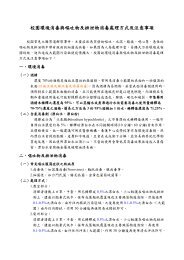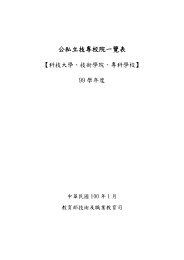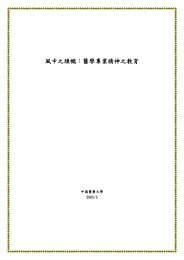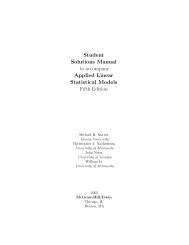Journal of Film Preservation - FIAF
Journal of Film Preservation - FIAF
Journal of Film Preservation - FIAF
Create successful ePaper yourself
Turn your PDF publications into a flip-book with our unique Google optimized e-Paper software.
Svenska Stumfilmsklassiker<br />
(Swedish Silent <strong>Film</strong> Classics)<br />
Clyde Jeavons<br />
DVDs<br />
Publié à l’occasion des 70 ans du<br />
Swedish <strong>Film</strong> Institute, ce magnifique<br />
c<strong>of</strong>fret propose six titres de la période<br />
1917-1924 dans une restauration<br />
impeccable. Bien que ne couvrant<br />
qu’une période de sept ans et se<br />
limitant aux œuvres de trois cinéastes,<br />
le c<strong>of</strong>fret n’en confirme pas moins<br />
la suprématie du cinéma suédois en<br />
ces années : une véritable révélation<br />
pour quiconque découvrirait cette<br />
production à travers ce c<strong>of</strong>fret.<br />
Sjöström, représenté ici par deux<br />
films (Terje Vigen, 1917, et Körkalen<br />
/ La Charrette fantôme, 1921), est le<br />
colosse incontestable du cinéma<br />
suédois : un géant du cinéma, à l’égal<br />
de ses contemporains Griffith et Gance.<br />
Adapté d’Ibsen, Terje Vigen, histoire<br />
de la lutte d’un homme contre la<br />
mer, constitue un véritable référent<br />
du tournage en extérieurs, alors que<br />
Körkalen transforma la structure même<br />
du cinéma suédois et lui assura une<br />
réputation internationale – le film<br />
permit par ailleurs à son réalisateur de<br />
poursuivre sa carrière à Hollywood. (Les<br />
suppléments nous permettent, entre<br />
autres, de voir Ingmar Bergman diriger<br />
Sjöström, dans Les Fraises sauvages).<br />
Mauritz Stiller, moins bien servi par<br />
l’histoire que Sjöström, si ce n’est pour<br />
avoir amené Garbo à Hollywood, est<br />
représenté ici par trois véritables chefsd’œuvre<br />
(Herr Arnes Pengar / Le Trésor<br />
d’Arne,1919, Erotikon, 1920, et Gösta<br />
Berling Saga / La Légende de Gösta<br />
Berling, 1924), qui le confirment comme<br />
l’un des cinéastes les plus innovateurs<br />
et influents de l’époque muette. Chantre<br />
de la nature, personne mieux que lui<br />
n’a su filmer les paysages nordiques où<br />
l’homme affronte la nature.<br />
Häxan (1922) du danois Benjamin<br />
Christensen complète cette riche<br />
sélection. Objet unique dans l’histoire<br />
Is it too fanciful to suppose that original DVD box-sets might one day<br />
become as coveted by collectors as rare vinyl recordings or literary first<br />
editions? Just in case, you would be wise to hang on to this treasury <strong>of</strong><br />
silent classic movies from Sweden’s sui generis “guldäldern” – golden age<br />
– defined as the period 1917 to 1924. Conceived by the Swedish <strong>Film</strong><br />
Institute, in collaboration with Svensk <strong>Film</strong>industri, to mark and celebrate<br />
the SFI’s 70th anniversary, this important and elegant production brings<br />
together six undisputed, undiluted masterpieces <strong>of</strong> Swedish silent cinema,<br />
impeccably restored, which can also be seen collectively and opportunely<br />
as a consummation <strong>of</strong> the recent resurgence <strong>of</strong> Scandinavia’s film-making<br />
past. Although confined to seven (albeit fecund) years and just three<br />
representative directors – Victor Sjöström, Mauritz Stiller and Benjamin<br />
Christensen - as confirmation <strong>of</strong> Swedish cinema’s pre-eminence at the<br />
time, the films in this set are shrewdly chosen. To anyone coming fresh<br />
to this corner <strong>of</strong> national production, they will be a revelation <strong>of</strong> some<br />
magnitude.<br />
Sjöström remains the colossus <strong>of</strong> Swedish cinema, one <strong>of</strong> the great<br />
actor/directors and a giant <strong>of</strong> the art, whose mastery <strong>of</strong> soul-searching,<br />
narrative melodrama, driven by national angst, climate and landscape, was<br />
unmatched in scale and intensity even by his formidable contemporaries,<br />
D W Griffith and Abel Gance. Sjöström had already shifted the thematic<br />
boundaries in 1913 with his realistic social drama, Ingeborg Holm, about<br />
a single mother losing custody <strong>of</strong> her children. With the two films <strong>of</strong> his<br />
in this collection, Terje Vigen (1917) and Körkalen (The Phantom Carriage,<br />
1921), he transformed both the structure and the international reputation<br />
<strong>of</strong> Swedish film-making, the latter masterpiece taking him to Hollywood<br />
and his crowning American achievements, The Scarlet Letter (1926) and<br />
The Wind (1928), both starring Griffith’s protégé, Lillian Gish. Terje Vigen,<br />
adapted from Henrik Ibsen’s epic poem about a man’s vengeful struggle<br />
against the sea, set the standard for location film-making, the interaction<br />
<strong>of</strong> art and nature, whilst Körkalen, an international triumph and arguably<br />
Sjöström’s greatest film – a dark fantasy <strong>of</strong> alcoholism and death, entirely<br />
studio-shot - astounded audiences with its complex mix <strong>of</strong> realism and<br />
the supernatural, conveyed through haunting special effects. Equally<br />
astounding is how neglected the film had become outside Sweden in<br />
recent years until its restoration and revival in festivals and retrospectives,<br />
especially as it was the film which most pr<strong>of</strong>oundly influenced Ingmar<br />
Bergman, who paid homage to both the film and its director, his mentor<br />
Sjöström, with his echo-resounding Smultronstället (Wild Strawberries,<br />
1957). The special features on the Körkalen disc – footage <strong>of</strong> the shooting<br />
<strong>of</strong> Wild Strawberries, showing Bergman directing an ageing Sjöström clearly<br />
besotted by his young co-star Bibi Andersson; the building, during 1920-21,<br />
<strong>of</strong> the new Råsunda Studios, where Körkalen was shot; and a 1980 interview<br />
with Bergman, speaking in depth about Sjöström – are alone worth the<br />
price <strong>of</strong> the box set.<br />
79 <strong>Journal</strong> <strong>of</strong> <strong>Film</strong> <strong>Preservation</strong> / 81 / 2009
















